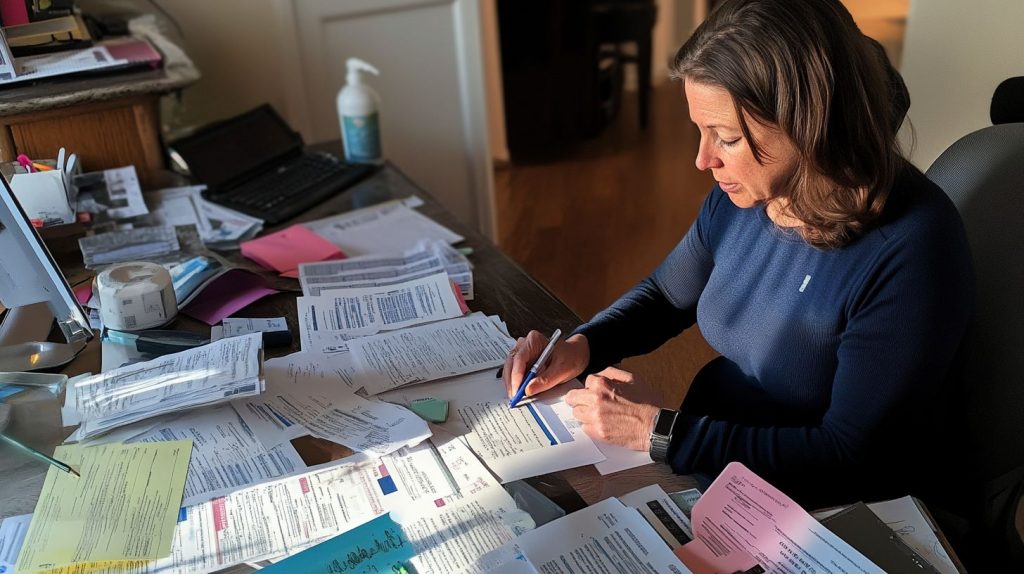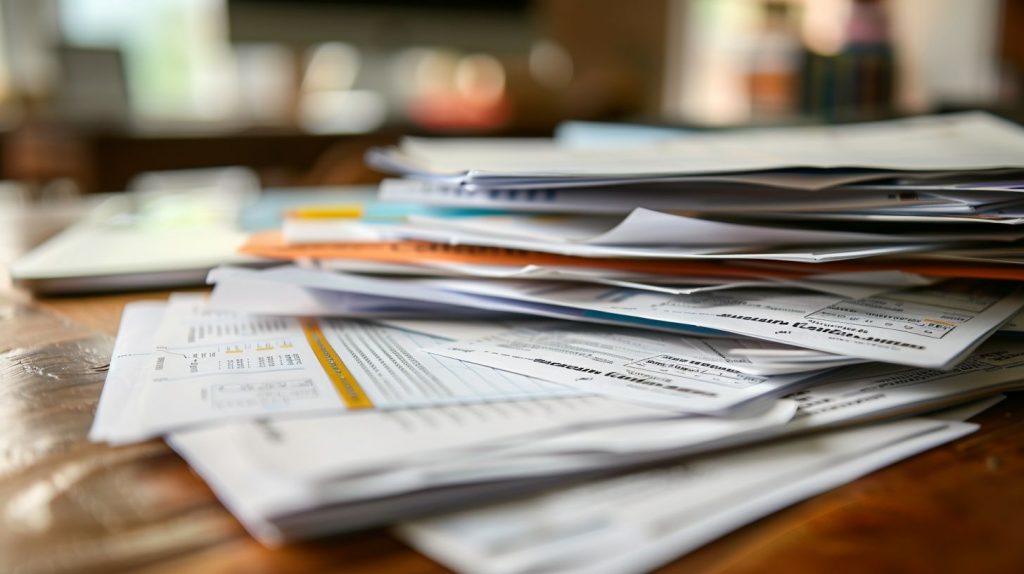-
Table of Contents
- Introduction
- Exploring Debt Relief Options in Canada: What Are They and How Do They Work?
- Understanding the Different Types of Debt Relief Options in Canada
- How to Choose the Right Debt Relief Option for Your Situation
- The Pros and Cons of Debt Consolidation in Canada
- Exploring Debt Settlement as a Debt Relief Option in Canada
- How to Negotiate with Creditors for Debt Relief in Canada
- The Benefits of Bankruptcy as a Debt Relief Option in Canada
- How to Rebuild Your Credit After Debt Relief in Canada
- Exploring Consumer Proposals as a Debt Relief Option in Canada
- Understanding the Tax Implications of Debt Relief in Canada
- How to Avoid Debt Relief Scams in Canada
- Exploring Government Programs for Debt Relief in Canada
- How to Find a Reputable Debt Relief Company in Canada
- The Impact of Debt Relief on Your Credit Score in Canada
- How to Manage Your Finances After Debt Relief in Canada
- Conclusion
Introduction
Debt relief options in Canada are available to help individuals and families manage their debt and improve their financial situation. These options can include debt consolidation, debt settlement, consumer proposals, and bankruptcy. Each of these options has its own advantages and disadvantages, and it is important to understand how they work before making a decision. Debt consolidation involves taking out a loan to pay off multiple debts, while debt settlement involves negotiating with creditors to reduce the amount of debt owed. Consumer proposals involve making a formal offer to creditors to pay a portion of the debt owed, while bankruptcy involves the liquidation of assets to pay off creditors. Each of these options can help individuals and families manage their debt and improve their financial situation, but it is important to understand the implications of each option before making a decision.
Exploring Debt Relief Options in Canada: What Are They and How Do They Work?
Debt relief is a term used to describe a range of options available to individuals and businesses in Canada who are struggling with debt. These options can help individuals and businesses manage their debt and improve their financial situation.
Debt relief options in Canada include debt consolidation, debt settlement, consumer proposals, and bankruptcy. Each of these options has its own advantages and disadvantages, and it is important to understand how they work before making a decision.
Debt consolidation is a process of combining multiple debts into one loan with a lower interest rate. This can help reduce monthly payments and make it easier to manage debt. It is important to note that debt consolidation does not reduce the amount of debt owed, but it can help make payments more manageable.
Debt settlement is a process of negotiating with creditors to reduce the amount of debt owed. This can be a good option for those who are unable to make payments on their debt. It is important to note that debt settlement can have a negative impact on credit scores.
A consumer proposal is a legally binding agreement between a debtor and their creditors. It is a way to settle debt without filing for bankruptcy. A consumer proposal can help reduce the amount of debt owed and can help improve credit scores.
Finally, bankruptcy is a legal process that allows individuals and businesses to discharge their debts. It is important to note that bankruptcy can have a significant impact on credit scores and can make it difficult to obtain credit in the future.
Debt relief options in Canada can help individuals and businesses manage their debt and improve their financial situation. It is important to understand how each of these options works before making a decision. It is also important to seek professional advice to ensure that the best option is chosen for the individual or business.
Understanding the Different Types of Debt Relief Options in Canada
Debt relief is a term used to describe a variety of options available to individuals and businesses in Canada who are struggling with debt. These options can help reduce the amount of debt owed, lower interest rates, and provide a more manageable repayment plan. It is important to understand the different types of debt relief options available in Canada in order to make an informed decision about which option is best for your situation.
The first type of debt relief option is debt consolidation. This involves taking out a loan to pay off multiple debts, such as credit cards, lines of credit, and other loans. The loan is then used to pay off the existing debts, leaving the borrower with one loan to manage. This can help reduce interest rates and simplify the repayment process.
The second type of debt relief option is a debt management plan. This involves working with a credit counselling agency to create a plan to pay off debt. The agency will negotiate with creditors to reduce interest rates and create a payment plan that is affordable for the borrower.
The third type of debt relief option is a consumer proposal. This is a legally binding agreement between the borrower and their creditors. The proposal outlines a repayment plan that is approved by the creditors and is based on the borrower’s ability to pay. This option can help reduce the amount of debt owed and provide a more manageable repayment plan.
The fourth type of debt relief option is bankruptcy. This is a legal process that allows individuals and businesses to discharge their debts. It is important to understand the consequences of bankruptcy before making this decision, as it can have a long-term impact on credit scores and financial stability.
Debt relief options can help individuals and businesses in Canada manage their debt and get back on track financially. It is important to understand the different types of debt relief options available in order to make an informed decision about which option is best for your situation.
How to Choose the Right Debt Relief Option for Your Situation
When it comes to debt relief, there are a variety of options available to help you get back on track. It is important to understand the different options available and how they can help you in your particular situation. This article will provide an overview of the different debt relief options and help you choose the right one for your situation.
The first option to consider is debt consolidation. This involves taking out a loan to pay off all of your existing debts. This can help you reduce your monthly payments and interest rates, making it easier to manage your debt. However, it is important to remember that you will still be responsible for paying off the loan, so it is important to make sure you can afford the payments.
Another option is debt settlement. This involves negotiating with your creditors to reduce the amount of debt you owe. This can be a good option if you have a large amount of debt and are unable to make the payments. However, it is important to remember that this option can have a negative impact on your credit score.
Finally, bankruptcy is an option for those who are unable to manage their debt. This option can help you get out of debt, but it can also have a long-term negative impact on your credit score. It is important to understand the consequences of filing for bankruptcy before making this decision.
No matter which debt relief option you choose, it is important to make sure you understand the terms and conditions of the agreement. Make sure you read all of the paperwork carefully and ask questions if you don’t understand something. It is also important to make sure you can afford the payments and that you are comfortable with the terms of the agreement.
By understanding the different debt relief options available, you can make an informed decision about which one is right for your situation. With the right debt relief option, you can get back on track and start rebuilding your financial future.
The Pros and Cons of Debt Consolidation in Canada
Debt consolidation is a popular option for Canadians looking to manage their debt. It involves taking out a loan to pay off multiple debts, such as credit cards, lines of credit, and other loans. This can help simplify debt repayment and potentially reduce interest costs. However, debt consolidation is not the right choice for everyone. Here are some of the pros and cons of debt consolidation in Canada.
Pros
Lower Interest Rates: Debt consolidation can help reduce interest costs by consolidating multiple debts into one loan with a lower interest rate. This can help save money in the long run.
Simplified Repayment: Debt consolidation can make repayment easier by combining multiple debts into one loan with a single payment. This can help make repayment more manageable.
Improved Credit Score: Paying off multiple debts with a single loan can help improve your credit score. This can make it easier to qualify for other loans in the future.
Cons
Higher Loan Amount: Debt consolidation can result in a higher loan amount than the total of the individual debts. This can make it more difficult to pay off the loan.
Longer Repayment Period: Debt consolidation can also result in a longer repayment period, which can make it more difficult to pay off the loan.
Risk of Accumulating More Debt: Debt consolidation can make it easier to accumulate more debt, as it can make it easier to access additional credit. This can lead to a cycle of debt.
In conclusion, debt consolidation can be a useful tool for managing debt, but it is not the right choice for everyone. It is important to consider the pros and cons before making a decision.
Exploring Debt Settlement as a Debt Relief Option in Canada
Debt settlement is a debt relief option available to Canadians who are struggling to pay off their debts. It is a process in which a debtor and creditor negotiate a reduced amount of debt that the debtor can pay off in a lump sum or in installments. This option can be beneficial for those who are unable to pay off their debts in full and are looking for a way to reduce their debt burden.
When considering debt settlement, it is important to understand the process and the potential risks and benefits. The process typically begins with the debtor contacting the creditor and proposing a settlement amount. The creditor will then review the proposal and decide whether to accept or reject it. If the creditor accepts the proposal, the debtor will be required to pay the agreed-upon amount in full.
The benefits of debt settlement include the ability to reduce the amount of debt owed, the ability to avoid bankruptcy, and the ability to avoid the negative consequences of defaulting on a loan. Additionally, debt settlement can help to improve a debtor’s credit score over time.
However, there are also potential risks associated with debt settlement. These include the possibility of the creditor rejecting the proposal, the possibility of the creditor taking legal action against the debtor, and the possibility of the debtor’s credit score being negatively impacted. Additionally, debt settlement can be a lengthy process and may require the debtor to pay fees to a debt settlement company.
Debt settlement can be a viable option for those who are struggling to pay off their debts and are looking for a way to reduce their debt burden. However, it is important to understand the process and the potential risks and benefits before making a decision. It is also important to seek professional advice from a qualified financial advisor or debt counsellor before entering into a debt settlement agreement.
How to Negotiate with Creditors for Debt Relief in Canada
Negotiating with creditors for debt relief in Canada can be a daunting task. However, with the right approach and knowledge, it is possible to successfully negotiate with creditors and obtain debt relief. Here are some tips to help you negotiate with creditors for debt relief in Canada.
1. Know Your Rights: It is important to understand your rights as a consumer when it comes to debt relief. In Canada, the Consumer Protection Act and the Bankruptcy and Insolvency Act provide protection for consumers in debt. Knowing your rights can help you negotiate with creditors more effectively.
2. Understand Your Financial Situation: Before you begin negotiating with creditors, it is important to understand your financial situation. Make sure you have a clear understanding of your income, expenses, and debts. This will help you determine what type of debt relief you can realistically negotiate with creditors.
3. Contact Your Creditors: Once you have a clear understanding of your financial situation, it is time to contact your creditors. Explain your situation and ask if they are willing to negotiate a debt relief plan. Be sure to be honest and upfront about your financial situation.
4. Negotiate: Once you have contacted your creditors, it is time to negotiate. Be sure to be firm but polite. Explain your financial situation and ask for a debt relief plan that is realistic and manageable. Be sure to get any agreements in writing.
5. Seek Professional Help: If you are unable to negotiate a debt relief plan with your creditors, it may be beneficial to seek professional help. A credit counsellor or a bankruptcy trustee can help you negotiate with creditors and provide you with the best debt relief options.
Negotiating with creditors for debt relief in Canada can be a difficult process. However, with the right approach and knowledge, it is possible to successfully negotiate with creditors and obtain debt relief. By following these tips, you can increase your chances of negotiating a debt relief plan that is beneficial for both you and your creditors.
The Benefits of Bankruptcy as a Debt Relief Option in Canada
Bankruptcy is a debt relief option available to individuals and businesses in Canada. It is a legal process that allows individuals and businesses to eliminate or restructure their debt. Bankruptcy can provide a fresh start for those struggling with debt and can help them get back on their feet financially.
The primary benefit of bankruptcy is that it can provide immediate relief from debt. When an individual or business files for bankruptcy, their creditors are legally prohibited from taking any action to collect the debt. This includes wage garnishments, collection calls, and other forms of debt collection. This can provide immediate relief from the stress and anxiety associated with debt.
Another benefit of bankruptcy is that it can help individuals and businesses restructure their debt. When an individual or business files for bankruptcy, they are able to negotiate with their creditors to reduce the amount of debt they owe. This can help them reduce their monthly payments and make their debt more manageable.
Finally, bankruptcy can help individuals and businesses rebuild their credit. After filing for bankruptcy, individuals and businesses can begin to rebuild their credit by making timely payments on their debts. This can help them improve their credit score and make it easier to obtain credit in the future.
Overall, bankruptcy can be a beneficial debt relief option for individuals and businesses in Canada. It can provide immediate relief from debt, help them restructure their debt, and help them rebuild their credit. For those struggling with debt, bankruptcy can be a viable option to help them get back on their feet financially.
How to Rebuild Your Credit After Debt Relief in Canada
Rebuilding your credit after debt relief in Canada can be a daunting task, but it is possible. With the right strategies and a commitment to financial responsibility, you can rebuild your credit score and get back on track. Here are some tips to help you get started.
1. Check Your Credit Report: Before you can begin rebuilding your credit, you need to know where you stand. Request a copy of your credit report from both Equifax and TransUnion and review it for accuracy. If you find any errors, dispute them with the credit bureaus.
2. Make Payments on Time: One of the most important factors in determining your credit score is your payment history. Make sure to pay all of your bills on time, every time. This will help to demonstrate that you are a responsible borrower.
3. Pay Down Your Debt: Paying down your debt is essential to rebuilding your credit. Make a budget and prioritize paying off your debt. Consider consolidating your debt into one loan with a lower interest rate.
4. Use Credit Wisely: Once you have paid down your debt, you can begin to use credit responsibly. Start by using a secured credit card or a low-limit credit card. Make sure to pay off the balance in full each month and never exceed your credit limit.
5. Monitor Your Credit: Monitor your credit score regularly to ensure that it is improving. You can get free credit reports from both Equifax and TransUnion once a year.
Rebuilding your credit after debt relief in Canada is possible with the right strategies and a commitment to financial responsibility. By following these tips, you can get back on track and improve your credit score.
Exploring Consumer Proposals as a Debt Relief Option in Canada
Debt can be a difficult and overwhelming burden for many Canadians. Fortunately, there are a variety of debt relief options available to help individuals manage their debt and get back on track financially. One such option is a consumer proposal, which is a legally binding agreement between a debtor and their creditors.
A consumer proposal is a debt repayment plan that is administered by a Licensed Insolvency Trustee (LIT). It is an alternative to bankruptcy and allows individuals to pay back a portion of their debt over a period of time. The amount of the repayment is based on the debtor’s income and assets, and the amount of debt they owe.
The process of filing a consumer proposal begins with a meeting with a LIT. During this meeting, the LIT will review the debtor’s financial situation and help them determine if a consumer proposal is the best option for them. If the debtor decides to proceed with a consumer proposal, the LIT will prepare the paperwork and submit it to the creditors.
Once the consumer proposal is accepted by the creditors, the debtor will make regular payments to the LIT, who will then distribute the payments to the creditors. The payments are typically lower than the original debt amount and the repayment period is usually between three and five years.
One of the main benefits of a consumer proposal is that it can help individuals avoid bankruptcy. It also allows them to keep their assets, such as their home and car, and can help them avoid wage garnishment. Additionally, it can help reduce the amount of interest and fees that are owed on the debt.
It is important to note that a consumer proposal is not a “get out of debt free” card. It is a serious financial commitment and should only be considered after careful consideration and consultation with a financial professional. Additionally, it is important to understand that a consumer proposal will remain on an individual’s credit report for up to three years after it is completed.
Overall, a consumer proposal can be a viable option for individuals who are struggling with debt and are looking for a way to manage their debt and get back on track financially. It is important to understand the process and the potential implications before making a decision. Consulting with a financial professional can help individuals make an informed decision about their debt relief options.
Understanding the Tax Implications of Debt Relief in Canada
Debt relief is a term used to describe a variety of strategies used to help individuals and businesses manage their debt. In Canada, debt relief can take many forms, including debt consolidation, debt settlement, and bankruptcy. Each of these options has different tax implications, and it is important to understand how they may affect your taxes.
Debt consolidation is a process in which multiple debts are combined into one loan with a lower interest rate. This can help reduce the amount of interest you pay on your debt, and can make it easier to manage your payments. The interest you pay on a debt consolidation loan is generally tax-deductible, so it can help reduce your overall tax burden.
Debt settlement is a process in which a creditor agrees to accept a reduced amount of money in exchange for forgiving the remaining debt. This can be a good option for those who are unable to make their payments, but it can also have tax implications. In Canada, any amount of debt forgiven is considered taxable income, so you may be required to pay taxes on the amount of debt that was forgiven.
Finally, bankruptcy is a legal process in which a person or business is declared insolvent and their assets are liquidated to pay off creditors. Bankruptcy can be a difficult process, but it can also provide a fresh start for those who are unable to manage their debt. In Canada, any debt discharged through bankruptcy is not considered taxable income, so you will not be required to pay taxes on the amount of debt that was discharged.
Understanding the tax implications of debt relief in Canada is important for anyone considering these options. It is important to consult with a qualified tax professional to ensure that you understand the potential tax implications of any debt relief strategy you are considering.
How to Avoid Debt Relief Scams in Canada
Debt relief scams are a growing problem in Canada, and it is important to be aware of the potential risks associated with them. In order to protect yourself from becoming a victim of a debt relief scam, there are several steps you can take.
First, be sure to do your research. Before engaging with any debt relief company, make sure to research the company thoroughly. Check the company’s website, read reviews, and contact the Better Business Bureau to ensure the company is legitimate.
Second, be wary of companies that promise quick and easy solutions. If a company is promising to erase your debt overnight, it is likely a scam. Legitimate debt relief companies will provide you with a plan to help you manage your debt over time.
Third, be aware of any upfront fees. Legitimate debt relief companies will not require you to pay any fees upfront. If a company is asking for money before providing any services, it is likely a scam.
Fourth, be sure to read all contracts carefully. Before signing any contracts, make sure to read them thoroughly and understand all of the terms and conditions. If you have any questions or concerns, be sure to ask the company for clarification.
Finally, be sure to trust your instincts. If something seems too good to be true, it probably is. If you feel uncomfortable with a company or their services, it is best to avoid them.
By following these steps, you can help protect yourself from becoming a victim of a debt relief scam in Canada.
Exploring Government Programs for Debt Relief in Canada
Debt relief is an important issue for many Canadians. Fortunately, there are a number of government programs available to help individuals and families manage their debt. This article will provide an overview of the various government programs available for debt relief in Canada.
The first program to consider is the Canada Emergency Response Benefit (CERB). This program provides financial assistance to individuals who have lost their job or had their income reduced due to the COVID-19 pandemic. The CERB provides up to $2,000 per month for up to 24 weeks.
The second program to consider is the Canada Student Loans Program (CSLP). This program provides financial assistance to students who are enrolled in post-secondary education. The CSLP provides up to $210 per week for up to 52 weeks.
The third program to consider is the Canada Pension Plan (CPP). This program provides financial assistance to individuals who are retired or disabled. The CPP provides up to $1,175 per month for up to 60 months.
The fourth program to consider is the Employment Insurance (EI) program. This program provides financial assistance to individuals who have lost their job or had their income reduced due to the COVID-19 pandemic. The EI program provides up to $573 per week for up to 26 weeks.
The fifth program to consider is the Goods and Services Tax/Harmonized Sales Tax (GST/HST) Credit. This program provides financial assistance to low-income individuals and families. The GST/HST Credit provides up to $443 per year for up to 10 years.
Finally, the sixth program to consider is the Canada Child Benefit (CCB). This program provides financial assistance to families with children under the age of 18. The CCB provides up to $6,765 per year for up to 10 years.
These are just a few of the government programs available for debt relief in Canada. It is important to research all of the available programs to determine which one is best suited to your individual needs.
How to Find a Reputable Debt Relief Company in Canada
Finding a reputable debt relief company in Canada can be a daunting task. With so many companies offering debt relief services, it can be difficult to know which one to trust. To ensure you are working with a reputable debt relief company, there are a few key factors to consider.
First, research the company’s reputation. Check online reviews and ratings to get an idea of how other customers have experienced the company’s services. Also, look for any complaints or warnings from government agencies or consumer protection organizations.
Second, make sure the company is licensed and accredited. All debt relief companies in Canada must be licensed by the provincial government. Additionally, look for accreditation from the Canadian Association of Credit Counselling Services (CACCS). This accreditation indicates that the company meets the highest standards of quality and service.
Third, ask about the company’s fees and services. Make sure you understand the fees associated with the services offered and that they are reasonable. Also, ask about the services the company provides and how they can help you manage your debt.
Finally, make sure the company is transparent. A reputable debt relief company should be open and honest about their services and fees. They should also provide clear information about their process and the results you can expect.
By following these steps, you can ensure you are working with a reputable debt relief company in Canada. Doing your research and asking the right questions can help you make an informed decision and get the help you need to manage your debt.
The Impact of Debt Relief on Your Credit Score in Canada
Debt relief can have a significant impact on your credit score in Canada. It is important to understand how debt relief works and how it can affect your credit score.
Debt relief is a process that helps individuals manage their debt by reducing the amount they owe or by restructuring their payments. This can be done through debt consolidation, debt settlement, or bankruptcy. Each of these options has different effects on your credit score.
Debt consolidation is a process that combines multiple debts into one loan with a lower interest rate. This can help reduce the amount of interest you pay and make it easier to manage your payments. While debt consolidation can help reduce your debt, it can also have a negative impact on your credit score. This is because it involves taking out a new loan, which can lower your credit score.
Debt settlement is a process that involves negotiating with creditors to reduce the amount of debt you owe. This can help reduce the amount of debt you owe and make it easier to manage your payments. However, debt settlement can also have a negative impact on your credit score. This is because it involves negotiating with creditors, which can be seen as a sign of financial distress.
Bankruptcy is a process that involves liquidating your assets to pay off your debts. This can help reduce the amount of debt you owe and make it easier to manage your payments. However, bankruptcy can have a significant negative impact on your credit score. This is because it is seen as a sign of financial distress and can stay on your credit report for up to 10 years.
In conclusion, debt relief can have a significant impact on your credit score in Canada. It is important to understand how debt relief works and how it can affect your credit score. Debt consolidation, debt settlement, and bankruptcy can all help reduce the amount of debt you owe, but they can also have a negative impact on your credit score. It is important to consider all of your options and speak to a financial advisor before making any decisions.
How to Manage Your Finances After Debt Relief in Canada
Managing your finances after debt relief in Canada can be a daunting task. However, with the right strategies and tools, you can successfully manage your finances and stay on track. Here are some tips to help you manage your finances after debt relief in Canada.
1. Create a budget: Creating a budget is the first step to managing your finances after debt relief. A budget will help you track your income and expenses, and identify areas where you can save money. It will also help you prioritize your spending and ensure that you are able to meet your financial obligations.
2. Track your spending: Tracking your spending is essential to managing your finances after debt relief. You should keep track of all your expenses, including bills, groceries, entertainment, and other miscellaneous items. This will help you identify areas where you can cut back and save money.
3. Pay off your debts: Paying off your debts is essential to managing your finances after debt relief. Make sure to make regular payments on your debts and prioritize paying off the highest interest debts first.
4. Build an emergency fund: Building an emergency fund is important for managing your finances after debt relief. An emergency fund will help you cover unexpected expenses and help you stay on track with your financial goals.
5. Seek professional help: If you are struggling to manage your finances after debt relief, it may be beneficial to seek professional help. A financial advisor can help you create a budget, track your spending, and develop a plan to pay off your debts.
By following these tips, you can successfully manage your finances after debt relief in Canada. With the right strategies and tools, you can stay on track and achieve your financial goals.
Conclusion
Debt relief options in Canada are a great way to help individuals and families manage their debt. These options include debt consolidation, debt settlement, consumer proposals, and bankruptcy. Each option has its own advantages and disadvantages, and it is important to understand the implications of each before making a decision. Debt relief options can help individuals and families reduce their debt and get back on track financially. It is important to speak to a qualified financial advisor to determine the best debt relief option for your situation.








